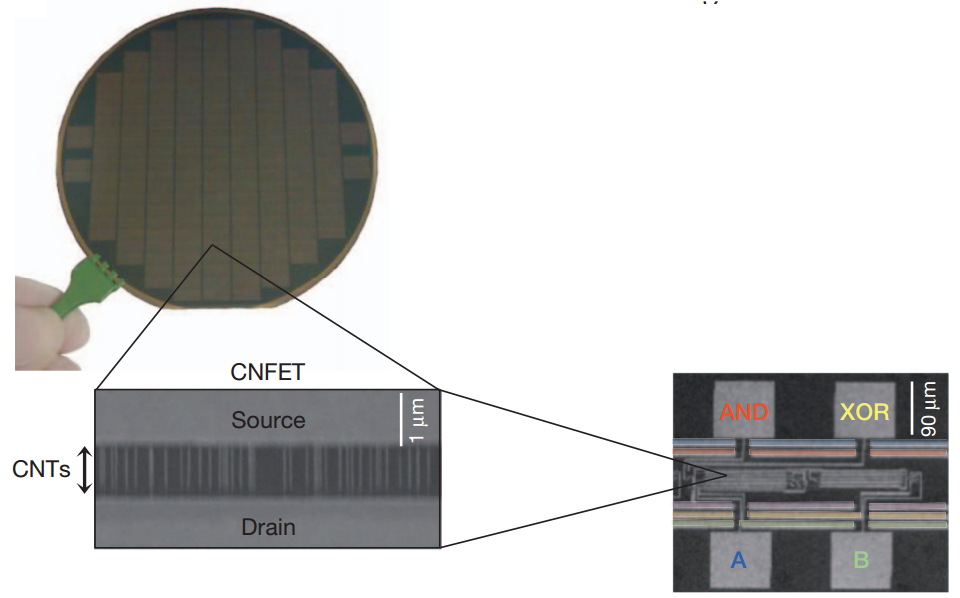Engineers build first carbon nanotube computer -

Move over silicon. There’s a new player in town in the semi-conductor category. Meet the carbon nanotube. Its use in electronics means faster and more efficient devices. And now, engineers at Stanford University have successfully built the first computer to ever use carbon nanotube technology.
As electronic devices are getting smaller, the current standard of semi-conductor, silicon, is beginning to have problems. Transistors with silicon are now being fit into smaller spaces, which causes a device to waste power and generate more heat. An example of this would be how warm a laptop gets after a few hours of usage. Using carbon nanotubes would be a simple solution to resolve that problem.
Unfortunately, carbon nanotubes have limitations that have prevented their usage, at least in consumer electronics. These long thin microscopic lines of carbon atoms have a tendency not to grow in perfectly straight lines, something required for use in electronics. And sometimes, they don’t act the way they’re supposed to. Instead of being semi-conductors that can be turned on and off, they are sometimes always on, constantly conducting electricity.
The Stanford scientists started their project by fixing these issues. The most complicated process was figuring out how to work with misshapen carbon nanotubes. However, the scientists came up with an algorithm that would guarantee that these imperfect nanotubes still worked as expected on a circuit. That still left the problem of the always-on always-conducting nanotubes. After adding the nanotubes to a circuit, the research team then shut off all the carbon nanotubes that worked properly. Then, they added electricity into the circuit. That electricity burned up those nanotubes that were constantly conducting it so that they vaporized, only leaving the good nanotubes.
Read more -

Move over silicon. There’s a new player in town in the semi-conductor category. Meet the carbon nanotube. Its use in electronics means faster and more efficient devices. And now, engineers at Stanford University have successfully built the first computer to ever use carbon nanotube technology.
As electronic devices are getting smaller, the current standard of semi-conductor, silicon, is beginning to have problems. Transistors with silicon are now being fit into smaller spaces, which causes a device to waste power and generate more heat. An example of this would be how warm a laptop gets after a few hours of usage. Using carbon nanotubes would be a simple solution to resolve that problem.
Unfortunately, carbon nanotubes have limitations that have prevented their usage, at least in consumer electronics. These long thin microscopic lines of carbon atoms have a tendency not to grow in perfectly straight lines, something required for use in electronics. And sometimes, they don’t act the way they’re supposed to. Instead of being semi-conductors that can be turned on and off, they are sometimes always on, constantly conducting electricity.
The Stanford scientists started their project by fixing these issues. The most complicated process was figuring out how to work with misshapen carbon nanotubes. However, the scientists came up with an algorithm that would guarantee that these imperfect nanotubes still worked as expected on a circuit. That still left the problem of the always-on always-conducting nanotubes. After adding the nanotubes to a circuit, the research team then shut off all the carbon nanotubes that worked properly. Then, they added electricity into the circuit. That electricity burned up those nanotubes that were constantly conducting it so that they vaporized, only leaving the good nanotubes.
Read more -

No comments:
Post a Comment